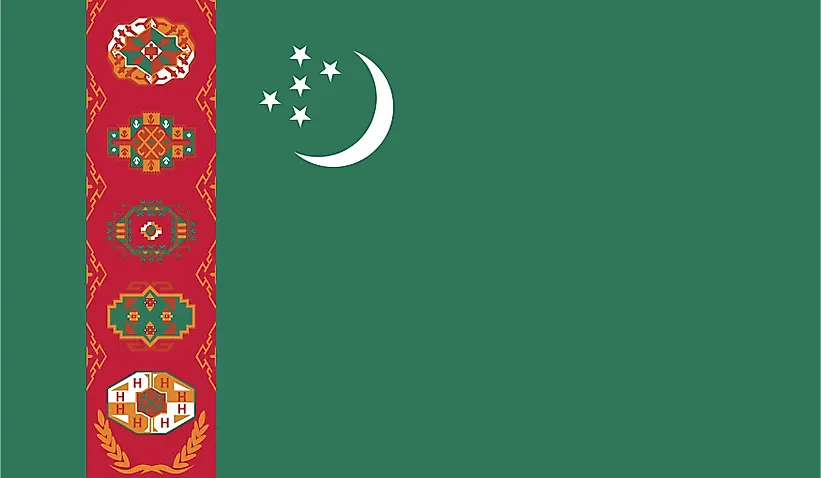
Turkmenistan
| Continent | Asia |
| Capital | Ashgabat |
| Population | 5,291,317 |
| GDP | $94.72 Billion |
| GDP per Capita | $17,300 |
| Dialing Code | +993 |
| ISO Code (2-letter) | TM |
| ISO Code (3-letter) | TKM |
Turkmenistan Landscapes






About Turkmenistan
Welcome to Turkmenistan, a nation of desert landscapes and ancient heritage. With approximately 6 million people across 488,100 square kilometers, Turkmenistan combines remarkable historical sites with modern development, standing as a unique crossroads of Central Asian culture.
Geographic Features and Natural Beauty
Turkmenistan’s geography encompasses diverse landscapes dominated by the Karakum Desert. The country features the Kopet Dag Mountains, the Caspian Sea coastline, and the famous Darvaza Gas Crater (known as the “Door to Hell”).
The landscape includes desert expanses, oases, and mountain ranges. The country’s varied terrain creates unique ecosystems supporting desert wildlife and rare species.
Protected areas include the Repetek Biosphere State Reserve and various nature sanctuaries. The country’s commitment to conservation focuses on preserving its desert ecosystems while managing water resources.
Cultural Heritage and Traditions
Turkmen culture represents a rich tradition of nomadic heritage and Islamic influence. The country’s heritage includes distinctive carpet weaving, famous Akhal-Teke horses, and traditional yurt dwelling customs.
Traditional arts include carpet making, jewelry crafting, and embroidery. Cultural practices feature traditional ceremonies, horse breeding traditions, and the importance of family bonds.
Turkmen cuisine reflects its nomadic heritage, featuring dishes like pilaf, shashlik, and various dairy products. The tradition of hospitality and respect for elders remains central to social life.
Historical Journey
Turkmenistan’s history spans from ancient civilizations along the Silk Road to modern independence. The country was home to significant historical sites including ancient Merv, once one of the world’s largest cities.
Significant periods include the Parthian Empire, the Islamic Golden Age, Russian rule, and independence in 1991. The country’s position along the Silk Road shaped its historical development.
Modern Economic Landscape
Today’s Turkmen economy focuses on natural gas production, cotton farming, and textile manufacturing. The country possesses the world’s fourth-largest reserves of natural gas.
Recent initiatives emphasize infrastructure development, industrial modernization, and tourism potential. Turkmenistan’s natural resources and strategic location support its development efforts.
International Relations and Global Position
Turkmenistan maintains a policy of permanent neutrality while fostering selective partnerships. The country’s energy resources and strategic position extend its regional significance.
Did You Know?
• The Darvaza Gas Crater has been burning continuously since 1971?
• Ashgabat holds the world record for the highest density of white marble buildings?
• The ancient city of Merv was once the largest city in the world?
• Turkmen carpets are considered among the finest in the world?
Conclusion
Turkmenistan represents a unique combination of ancient heritage and modern ambition. From its desert expanses to its marble cities, from its traditional crafts to its energy resources, Turkmenistan continues to evolve while preserving its cultural identity. As it addresses challenges including water management and economic diversification, Turkmenistan remains committed to progress while maintaining its position as a distinctive Central Asian nation.